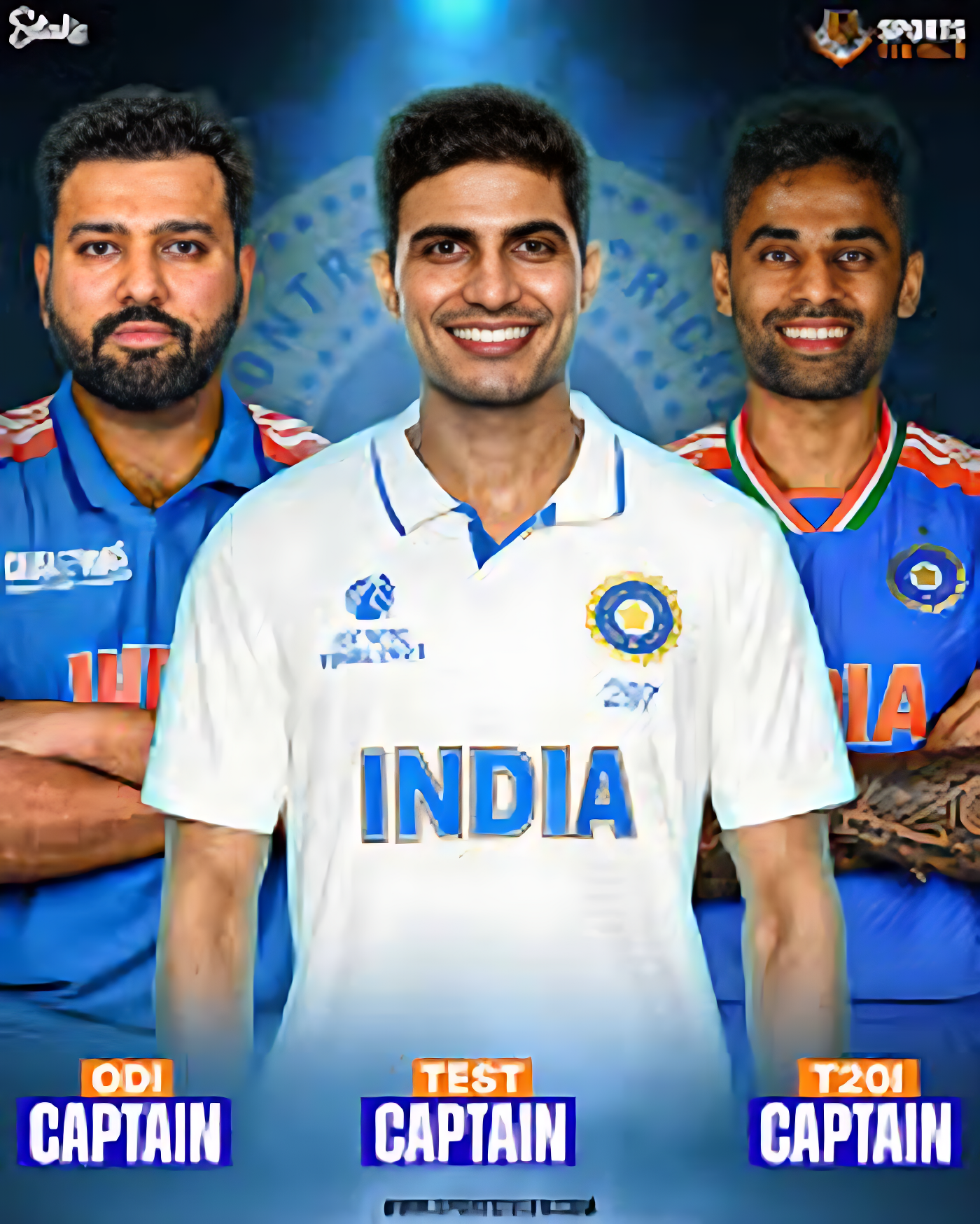New Delhi : Indian cricket has officially entered a new era with the announcement of a fresh leadership group in Test cricket. Following the retirement of senior batter Rohit Sharma from Test matches, the BCCI has appointed Shubman Gill as the new captain of the Indian Test team, with Rishabh Pant taking over as vice-captain.
This move has resulted in an unprecedented leadership structure in Indian cricket, as for the first time in history, all three formats of the game now have different captains and vice-captains officially designated.
Leadership Breakdown Across Formats:
-
Test Cricket:

-
Captain – Shubman Gill
-
Vice-Captain – Rishabh Pant
-
-
ODI Cricket:
-
Captain – Rohit Sharma
-
Vice-Captain – Shubman Gill
-
-
T20I Cricket:
-
Captain – Suryakumar Yadav
-
Vice-Captain – Axar Patel
-
This “split captaincy” model is being seen for the first time in Indian cricket’s long and storied history. Until now, such a defined and diversified leadership structure had not been implemented across formats. The move is being viewed as part of the BCCI’s long-term planning to groom a new generation of leaders, while still allowing experienced names like Rohit Sharma to lead in select formats.
A Dramatic Shift from 2024
The leadership structure in 2025 is radically different from 2024. Last year, Rohit Sharma had the distinction of captaining the Indian side across all formats. Here’s a snapshot of the 2024 leadership setup:
-
Test: Rohit Sharma (Captain), Jasprit Bumrah (Vice-Captain)
-
ODI: Rohit Sharma (Captain), Hardik Pandya (Vice-Captain)
-
T20I: Rohit Sharma (Captain), Hardik Pandya (Vice-Captain)
In a complete reversal, Hardik Pandya, who served as vice-captain in both white-ball formats, now holds no leadership role in any of the three formats. Meanwhile, players like Shubman Gill and Rishabh Pant, who previously had no formal vice-captaincy roles, have now been promoted to significant leadership positions.
Shubman Gill’s elevation, in particular, underscores the faith the selectors have in the young batter’s temperament, vision, and long-term potential to lead India in red-ball cricket. Rishabh Pant’s comeback after injury and his rise to vice-captaincy also signals his growing influence in the team.
With the next World Test Championship cycle underway and a packed international calendar ahead, the Indian cricket team is clearly betting on youth, versatility, and format-specific strategies. Whether this new leadership model pays off remains to be seen, but one thing is clear — Indian cricket is turning a fresh page.






